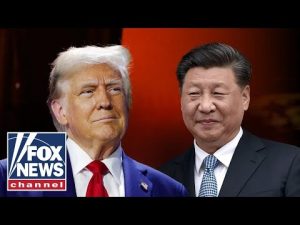In a turn that feels like a nostalgic trip to the power wars of yesteryear, President Trump has decided to roll back restrictions and give coal the green light once again. It’s like digging deep into history when coal was king. For all the hoopla about green energy, this executive order is attempting to breathe life back into an industry many thought was on life support. Once accounting for about half of our energy production, coal now finds itself down to around 16%. Natural gas and renewable energy sources have taken significant slices of the energy pie, but coal may once again get a chance to make its mark, much to the chagrin of its more modern competitors.
Trump’s timing couldn’t be more interesting. With new technology, artificial intelligence (AI) is stepping up, seemingly faster than a supercomputer plays chess. The argument is that the country’s energy consumption will need to double to power this new digital frontier. While it’s undeniably ambitious, it’s also oddly reminiscent of the era when horsepower reigned supreme and fuels were fossil-based. Nevertheless, it seems the former president is convinced that more energy will seamlessly translate into stronger national capabilities, particularly in AI, a field where the U.S. is jockeying against global rivals like China.
In an arena typically buzzing with talk of tech titans and innovation, introducing coal might seem antiquated to some. Yet, in keeping with tradition, Trump’s announcement comes wrapped in a bow of national pride and economic promise. Lifting barriers to coal mining on federal land and ending regulations that have discouraged coal investment in the past is his version of firing up the old economic furnace.
Meanwhile, on the tech front, AI entrepreneur Alex has been busily presenting to Congress. At a lively hearing, Alex highlighted the essential intersection of AI, energy, and global competitiveness. The message – the AI race with China is about as serious as a heart attack, mandating a strategic plan steeped in data dominance. At its core, the dialogue pushes towards embracing AI for efficiency and effectiveness, especially concerning government operations and job creation. It seems a call to arms for policymakers to galvanize American innovation and workforce readiness in light of this technology surge, with coal poised cheerily on the sideline, ready to power this brave new world.
In a delightful twist of irony, all of these moves, whether hailed as savvy or seen as simply coal dusting off the old playbook, sit under the overarching tale of global rivalry. The ongoing competition within AI is painted as a critical crucible for future geopolitical landscapes. With data and energy heralded as key components, the tug-of-war continues between innovation and the traditional energy mix. Perhaps, this nod to coal will either spark new hope or serve as a curious sidebar in the chronicles of energy history. One thing is for sure, Trump certainly knows how to keep conversations lively, whether they look backward, forward, or somewhere in between.







